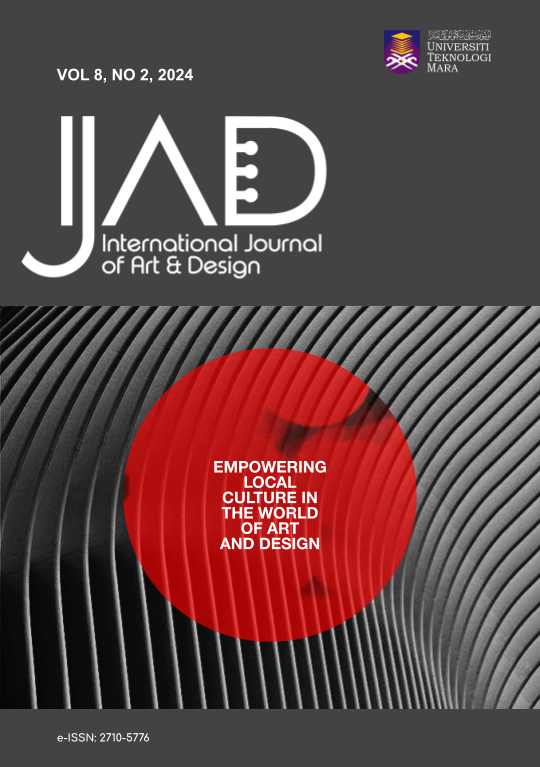Public Art and Cultural Identity: Analysing the Keris Sculpture under Municipal Hang Tuah Jaya, Melaka
DOI:
https://doi.org/10.24191/ijad.v8i2.3658Keywords:
Public Sculpture, Keris, Symbol, Malay Community, Cultural HeritageAbstract
In the Malay community, the Keris served not only as a self-defence tool but also as a significant symbol reflecting the Malay community and cultural heritage. This study explores the symbolic meaning and cultural significance of the public sculpture Keris at Jalan Air Keroh, installed by the Municipal Hang Tuah Jaya, Melaka Councils. Applying Feldman's art criticism theory, which encompasses four main aspects - description, analysis, interpretation, and judgement, this research seeks to investigate the design and meaning of the sculpture. Despite its prominent visibility and visual solid impact along the roadside, its deep cultural significance and influence on the local community remain enigmatic. By providing a comprehensive analysis of the symbolic and artistic elements of the Keris sculpture, this study aims to bridge this knowledge gap by utilising a systematic descriptive qualitative approach based on Feldmans's theory. The findings of this study are expected to provide comprehensible information that can enhance both local and tourist understanding and appreciation of the sculpture. It can also strengthen interactions and appreciation of Malay culture in Melaka. Findings showed the potential of public sculpture in Melaka, which serves as an aesthetic element and a crucial component to bringing a closer understanding and appreciation in promoting the cultural and historical significance of the Malay community to the general public.
Downloads
Published
Issue
Section
License
Copyright (c) 2024 International Journal of Art and Design

This work is licensed under a Creative Commons Attribution-NonCommercial-NoDerivatives 4.0 International License.



